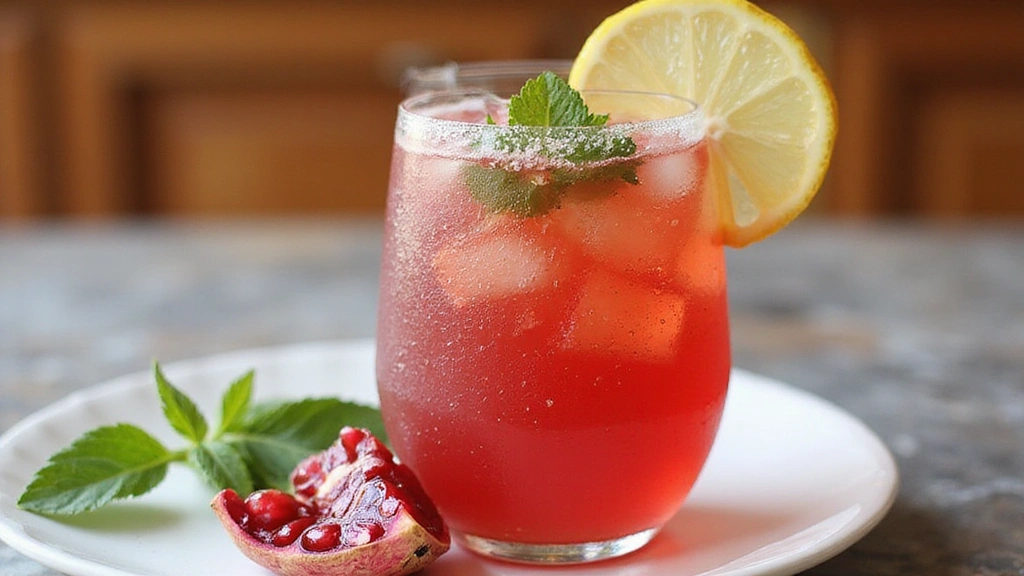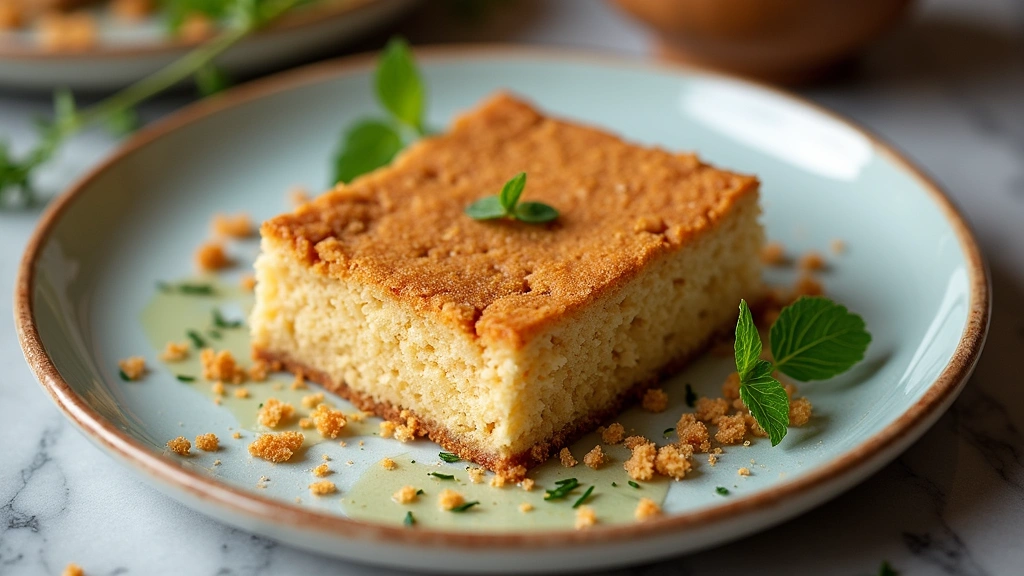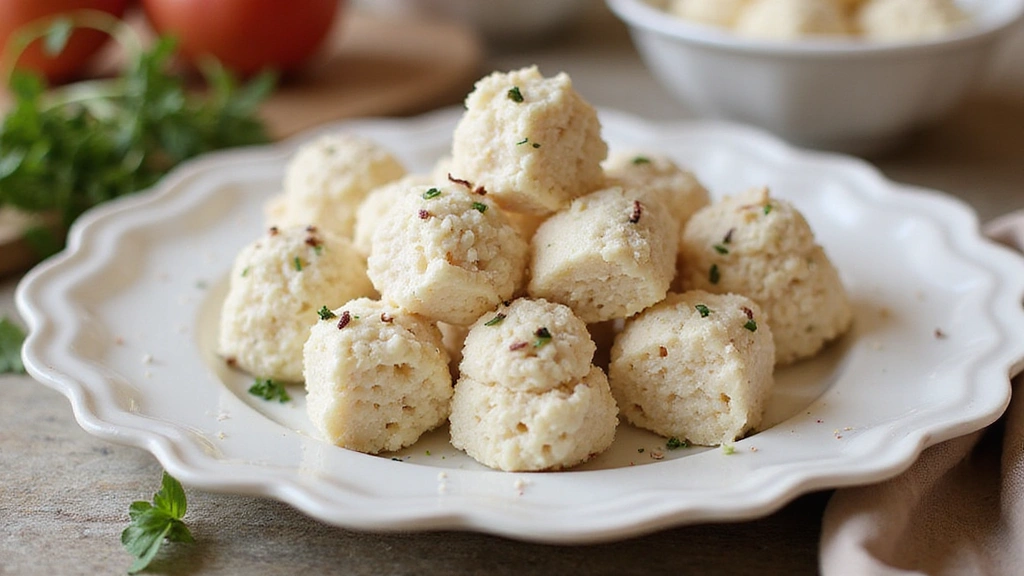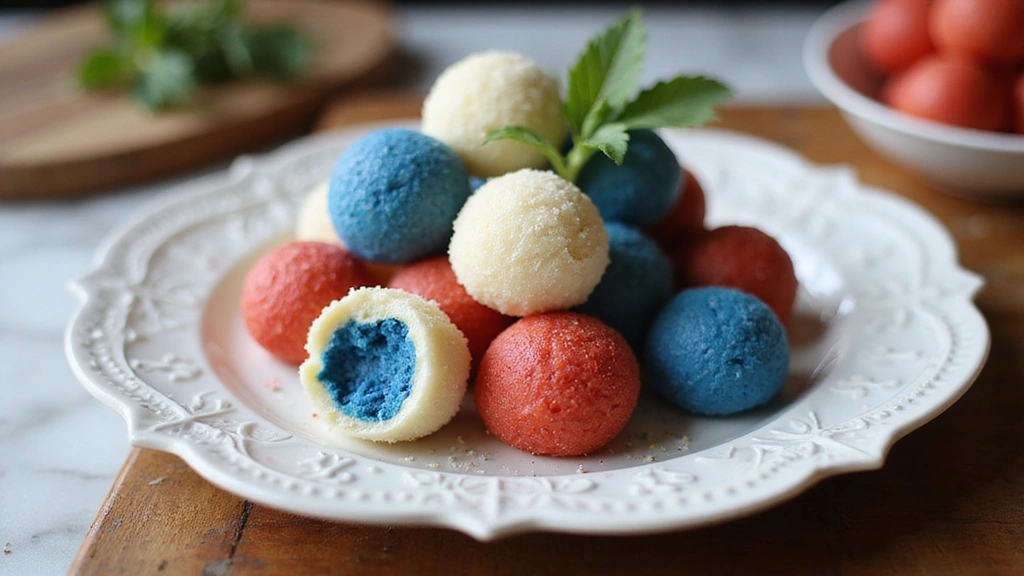When the summer sun blazes down, nothing refreshes quite like a tall glass of Pomegranate Lemonade.
The tangy burst of lemon juxtaposed with the sweet, tart notes of pomegranate creates an invigorating symphony of flavors.
I first encountered this delightful concoction at a small cafe during a particularly sweltering day, and it was love at first sip.
This drink offers a healthier alternative to sugary sodas, delivering both flavor and hydration.
It’s a perfect blend of taste and nutrition, making it a staple in my summer repertoire.
The History and Cultural Significance
• Beat the Heat: traces its origins to the Mediterranean region, where it was originally created by local farmers seeking a refreshing drink from their abundant citrus and pomegranate harvests.
• The dish evolved over decades as the introduction of sugar and modern juicing techniques improved its flavor profile, eventually becoming the beloved version we know today.
• In Middle Eastern culture, this drink traditionally appears at summer festivals, symbolizing hospitality and abundance.
• While many variations exist across different regions, the authentic version maintains the balance of tartness and sweetness that sets it apart from imitations.
Recipe Overview
Nutritional Information
Essential Equipment Guide
Juicer: Essential for extracting the maximum amount of juice from pomegranates and lemons, ensuring a vibrant flavor. A manual citrus juicer can work, but an electric juicer saves time and effort.
Fine Mesh Strainer: Important for removing seeds and pulp from the juice, resulting in a smooth texture. Alternatives like cheesecloth can work, but a strainer is more convenient.
Pitcher: Necessary for mixing and serving the lemonade. Look for a pitcher with a lid to keep your drink fresh and prevent spills.
Ingredients
For the Base
|
| Amount | Ingredient | Notes |
|---|---|---|
| 1 cup | pomegranate juice | freshly squeezed for best flavor |
| 1 cup | fresh lemon juice | about 4-5 large lemons |
| 4 cups | cold water | to dilute and balance the flavors |
| 1/2 cup | sugar | dissolves better when mixed with warm water |
| 1 pinch | salt | enhances sweetness and balances flavors |
Preparation Methods
Pomegranate Juicing: Roll the pomegranate on a hard surface before cutting to loosen seeds, then cut and gently break apart under water to collect seeds without mess. This technique prevents staining and loss of juice.
Lemon Juicing: Roll lemons on the counter before cutting in half to release more juice, then use a hand or electric juicer. This technique ensures you get the most juice possible with minimal effort.
Sugar Dissolving: Dissolve sugar in a small amount of warm water before mixing with the other ingredients. This method ensures that the sugar is completely dissolved, avoiding a gritty texture in the drink.
Step 1: Prepare the Pomegranate
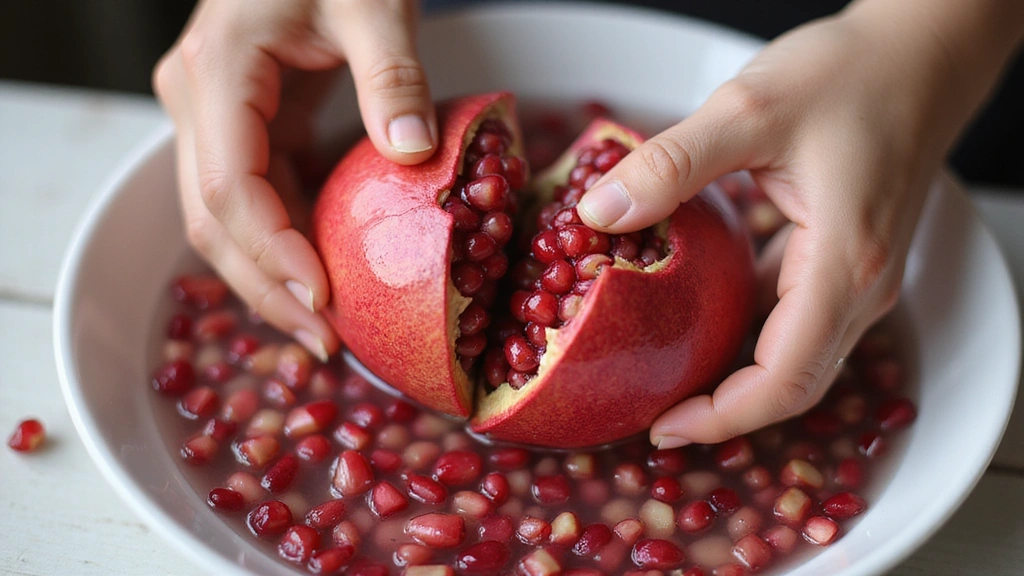
Cut the pomegranate in half and submerge it in a bowl of water.
Gently break apart the fruit under water, allowing the seeds to sink and the pith to float.
Skim off the pith from the water's surface.
Collect the seeds and set aside.
Step 2: Juice the Pomegranate Seeds
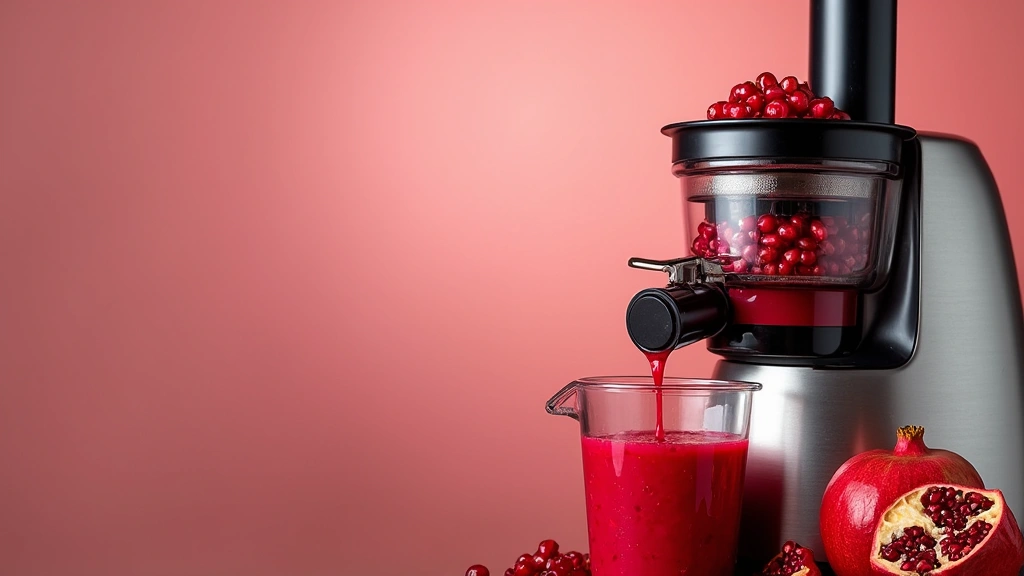
Place the pomegranate seeds into a juicer.
Process until all juice is extracted, collecting the juice in a container below.
Discard the remaining pulp.
Ensure no seeds are left unprocessed.
Step 3: Juice the Lemons
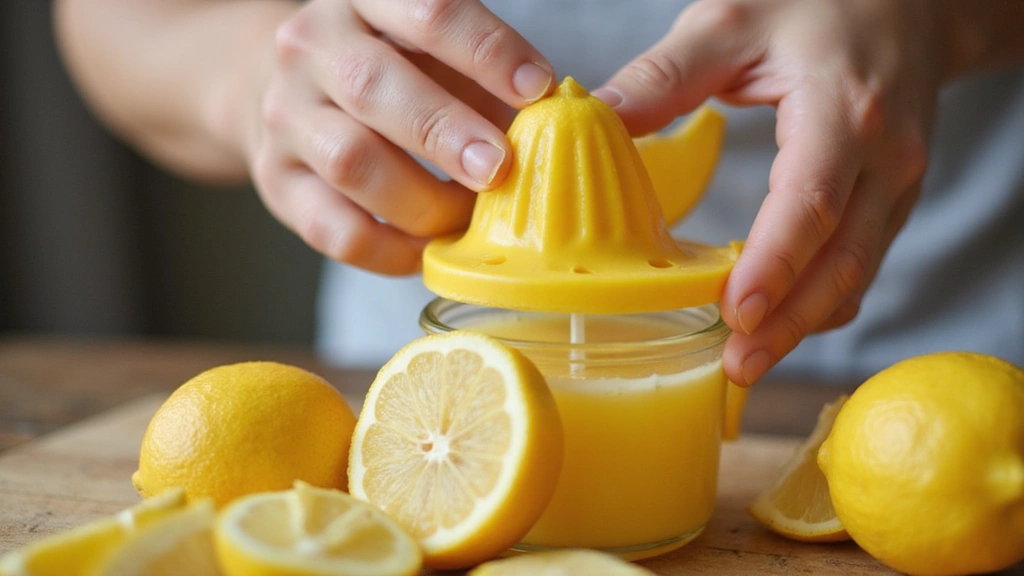
Roll each lemon gently on the counter to loosen the juice.
Cut the lemons in half and juice them using a citrus juicer.
Collect the lemon juice in a separate container.
Ensure all seeds are removed.
Step 4: Dissolve the Sugar
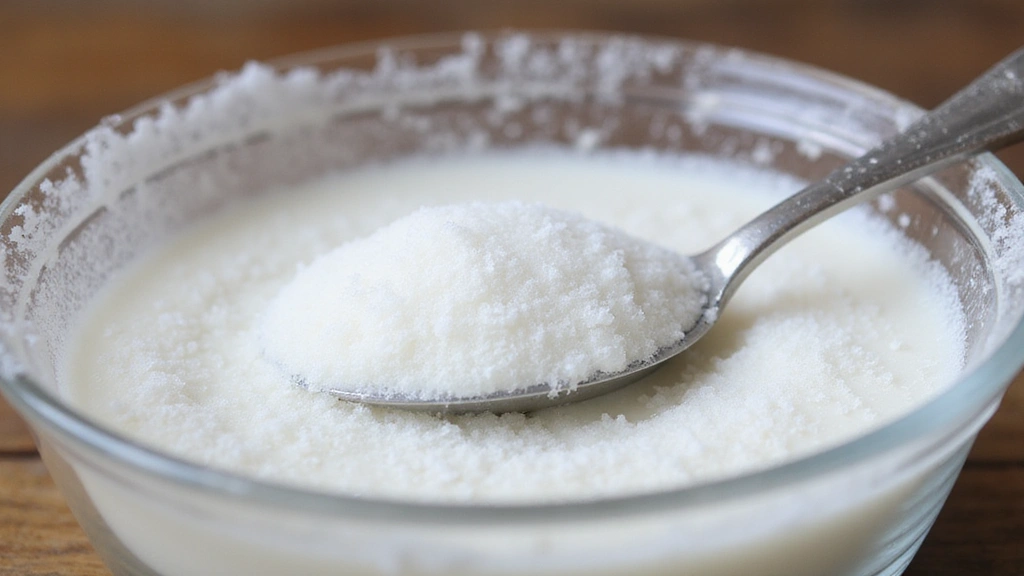
Measure out half a cup of sugar and place it in a small bowl.
Add a small amount of warm water to the sugar.
Stir until the sugar is completely dissolved.
Ensure no granules remain.
Step 5: Mix the Ingredients
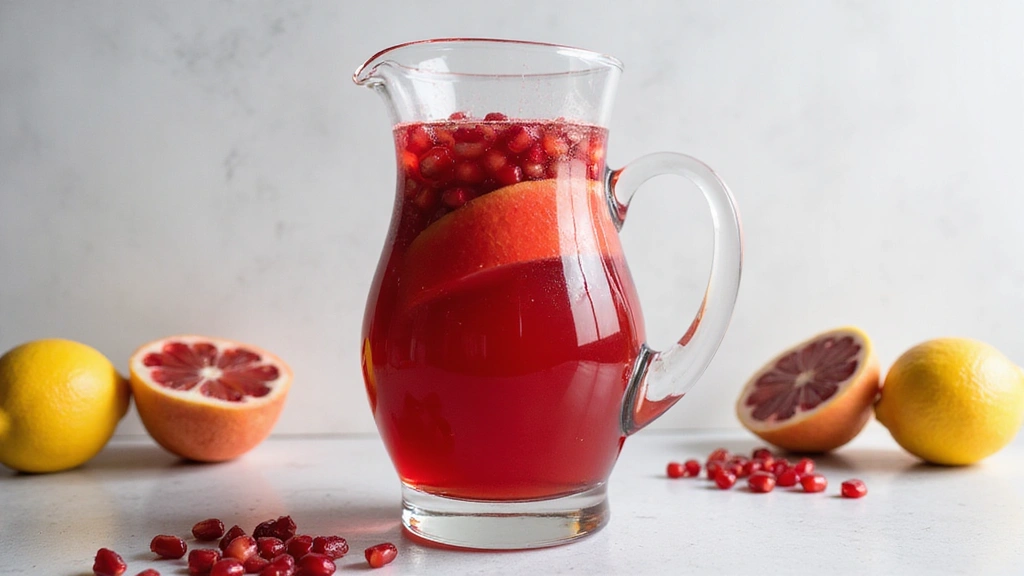
In a large pitcher, combine the pomegranate juice and lemon juice.
Add the dissolved sugar water and mix well.
Pour in the cold water to dilute and balance the flavors.
Stir until everything is well combined.
Step 6: Add a Pinch of Salt
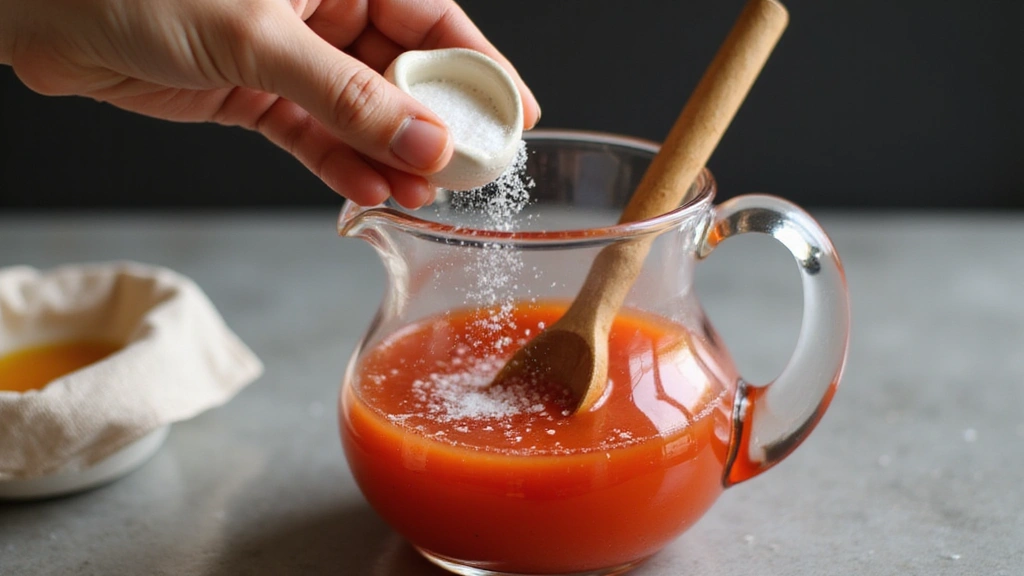
Sprinkle a pinch of salt into the pitcher.
Stir gently to ensure the salt is evenly distributed.
Taste the mixture to check for balance in flavors.
Adjust if necessary.
Step 7: Chill the Lemonade
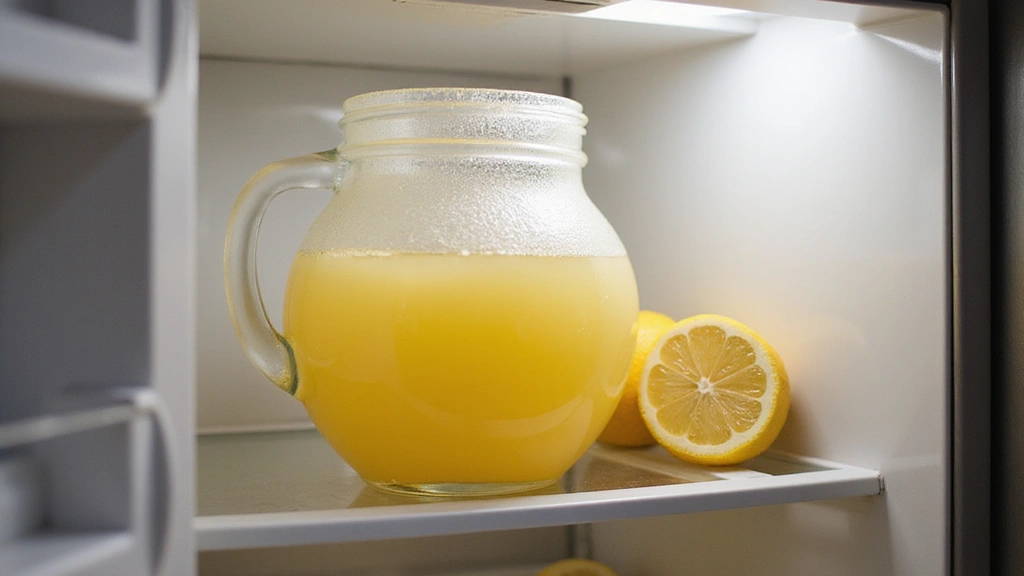
Cover the pitcher with a lid or plastic wrap.
Place the pitcher in the refrigerator to chill for at least 30 minutes.
Allowing it to chill enhances the flavors.
Ensure the lemonade is well chilled before serving.
Step 8: Serve the Lemonade
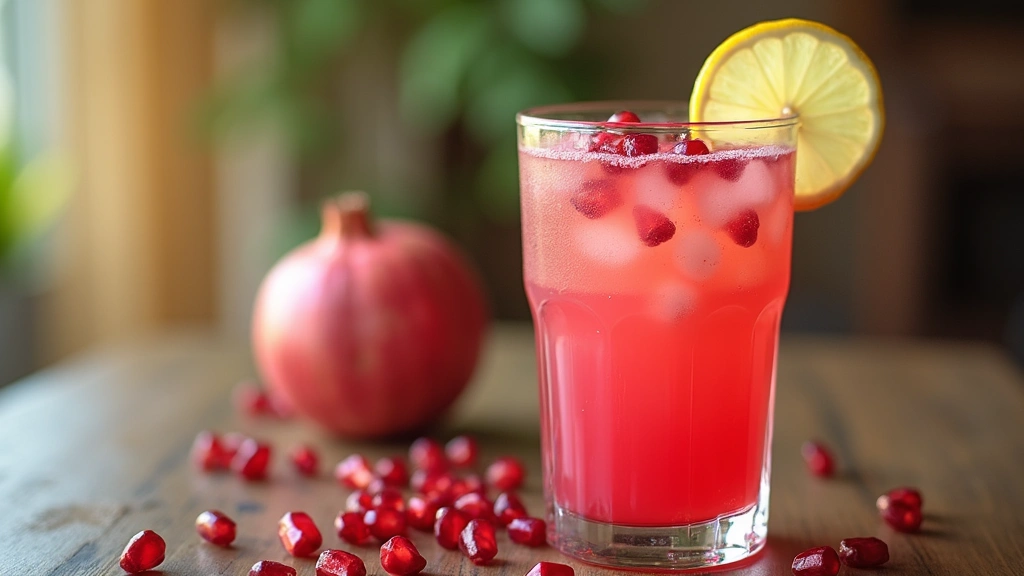
Fill glasses with ice cubes if desired.
Pour the chilled lemonade into each glass.
Garnish with a lemon slice and a few pomegranate seeds.
Serve immediately for best flavor.
Critical Timing and Temperature Guide
Chilling Time: Chill the lemonade for at least 30 minutes to allow flavors to meld and enhance. Avoid serving too soon as flavors won't be fully developed.
Sugar Dissolution: Ensure sugar is completely dissolved in warm water before mixing. Undissolved sugar will result in a gritty texture.
Juicing Temperature: Juice fruits at room temperature to yield maximum juice. Cold fruits yield less juice and may affect flavor.
Pro Tips for Beat the Heat:
• Ingredient Selection: Choose fresh, ripe pomegranates and lemons. The quality of these ingredients dramatically affects the flavor.
• Preparation Secret: Use a small amount of warm water to dissolve sugar completely before mixing. This ensures a smooth texture.
• Temperature Management: Keep the lemonade chilled to enhance its refreshing quality, especially on hot days.
• Texture Enhancement: Strain the juice using a fine mesh strainer to remove all pulp, achieving a smooth drink.
• Flavor Layering: Add a pinch of salt to enhance sweetness naturally without adding more sugar.
• Make-Ahead Strategies: Prepare the lemonade a day in advance and store it in the refrigerator to allow flavors to develop deeply.
• Restaurant-Quality Finishing Touches: Garnish with fresh mint leaves for an added touch of freshness and aroma.
• Equipment Optimization: Use a high-quality juicer to extract maximum juice efficiently, minimizing wastage and effort.
Troubleshooting Common Issues
• Too Tart: If the lemonade is too tart, add more sugar or a splash of water to balance the flavors.
• Too Sweet: If it's too sweet, add more lemon juice to restore balance.
• Gritty Texture: Ensure sugar is fully dissolved in warm water before mixing with the juice.
• Weak Flavor: Use fresh, high-quality fruits and ensure proper juicing methods.
• Separation of Juice and Water: Stir well before serving and ensure proper mixing initially.
• Lack of Aroma: Garnish with lemon zest or fresh mint leaves to enhance the aroma.
Variations and Regional Differences
• Middle Eastern Style: This version includes a hint of rose water for a fragrant twist, common in Middle Eastern cuisine.
• Caribbean Twist: Add a splash of coconut water for a tropical variation that offers a unique flavor profile.
• Mexican Influence: Incorporate a dash of chili powder for a spicy kick, reflecting Mexican beverage traditions.
• American Summer Version: Use sparkling water instead of still for a fizzy, refreshing summer beverage.
Food Science Behind the Recipe
• Acid and Sugar Balance: Understanding how acid from the lemon and sugar interact helps create a balanced flavor profile that's both refreshing and satisfying.
• Temperature Effects: Serving a chilled beverage enhances the perception of sweetness and refreshment, crucial for a summer drink.
• Juice Extraction Physics: Rolling fruits before juicing breaks down cell walls, allowing for maximum juice extraction and better flavor release.
Frequently Asked Questions
What's the most common mistake people make when preparing Pomegranate Lemonade? The most common mistake is not dissolving the sugar completely, resulting in a gritty texture.
Can I use bottled juices instead of fresh? Freshly squeezed juices are recommended for the best flavor, but bottled can be used in a pinch with a potential compromise in taste.
How can I make it less sweet? Reduce the amount of sugar or increase the lemon juice to adjust the sweetness level.
Is there a way to make it fizzy? Yes, replace still water with sparkling water for a bubbly effect.
How long can I store the lemonade? It can be stored in the refrigerator for up to 3 days, but is best enjoyed fresh.
Can I add alcohol for an adult version? Certainly, a splash of vodka or rum can be added for an adult twist.
How do I prevent staining while preparing? Use a bowl of water to deseed pomegranates and wear an apron to avoid stains.
Can I substitute the sugar with a healthier option? Honey or agave syrup are good alternatives, though they may slightly alter the flavor.
Serving and Presentation Guide
• Traditional Presentation: Serve in tall glasses with a slice of lemon on the rim and a few pomegranate seeds floating on top.
• Modern Twist: Use mason jars for a rustic, contemporary look, garnished with a sprig of fresh mint.
• Party Style: Serve in a large punch bowl with floating lemon and pomegranate slices for easy self-service at gatherings.
• Elegant Dining: Use crystal glassware for a sophisticated presentation at formal events.
Conclusion
Now that you're equipped with all the secrets to make the perfect Pomegranate Lemonade, it's time to beat the heat with this refreshing drink.
Whether you're hosting a summer party or simply enjoying a quiet afternoon, this beverage is sure to impress and refresh.
So grab those pomegranates and lemons, and create a delightful treat that rivals any soda out there!

